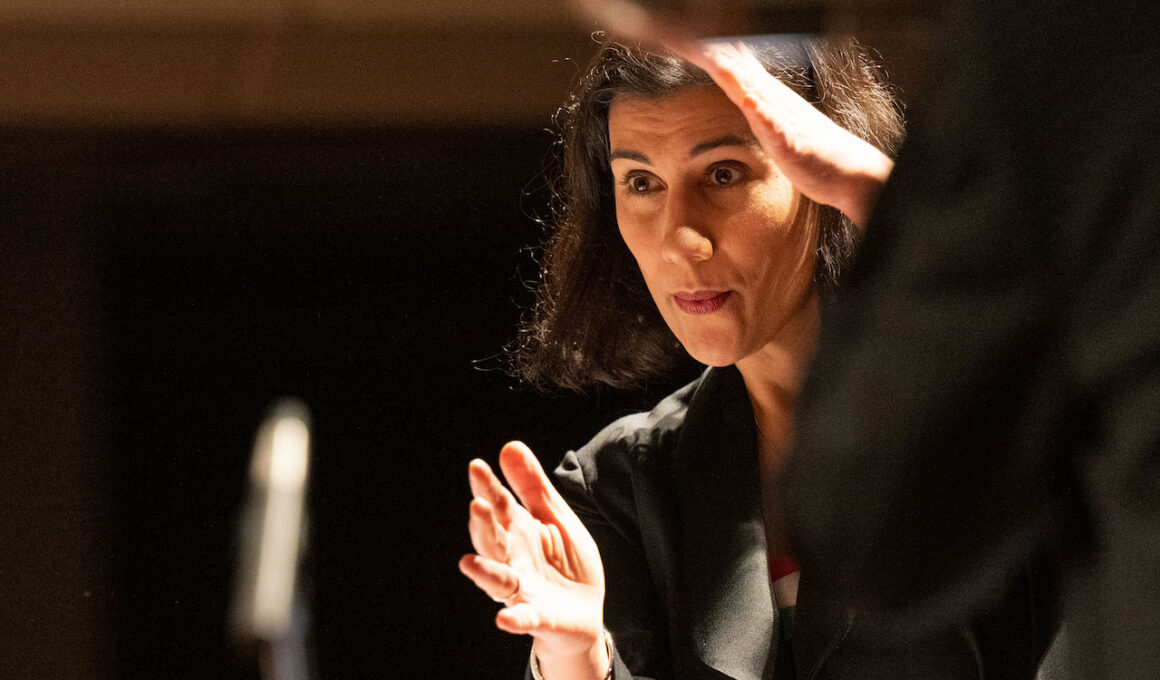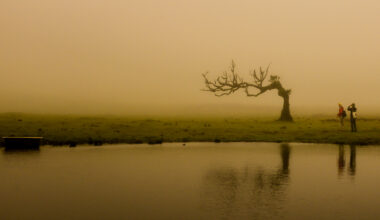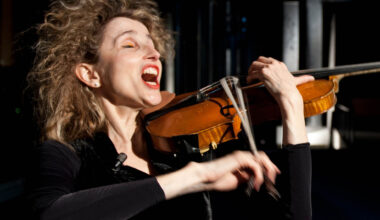Cymin Samawatie pushes the boundaries of contemporary music. She gained international reputation as the singer of her band Cyminology, whose latest three albums were released on ECM.
In her compositions, she blends impressionist colors with the vibrancy of free improvisation. She combines new compositional structures with chamber music, and minimalism with Persian poetry. In 2013, she co-founded the Trickster Orchestra, in which she unites some of the most outstanding soloists from various music traditions to create a contemporary and trans-traditional, shared musical language. In 2022, the initiated the Cymin Samawatie Ensemble. She recently received the TONALi Classical Music Award, GEMA’s German Composer’s Award, the German Jazz Award, and the Berlin Jazz Award.
FACTS
1. I love shapeshifters. That’s why the many-faced tricksters in mythological, folkloric, and religious imaginaries across the globe are role models for my musical work. They use their wit to disrupt the divine order and enable change – for me, this translates into a longing to liberate myself from clear-cut genres and categorizations of music.
2. I am a composer, conductor, singer, and pianist in trans-traditional contemporary music.
3. With my Trickster Orchestra, I am working on liberating the form of the orchestra from its 19th-century origins and lineups and open it up to the creative potentials of the 21st century. For me, that means to formulate a new paradigm of orchestral life grounded in diversity, multi-perspective approaches, and decolonization.
1. What is the biggest inspiration for your music?
Since my first musical steps, I am inspired by the multifarious forms of life itself and the people and creative minds I am surrounded by – whether in the form of real persons or of thoughts and poetry formulated a long time ago.
2. How and when did you get into making music?
I was drawn to music since a very early age. One of the first moments of making music was when I sang the children songs at Kindergarten – which I immediately took as the basis to improvise my own musical stories as a child.
3. What are 5 of your favourite albums of all time?
Erykah Badu (Baduizm)
Kim Kashkashian & Robert Levin (Asturiana)
Chet Baker (It could happen to you)
Alicia Keys (ALICIA)
Rage Against The Machine (Rage Against The Machine 1992)
4. What do you associate with Berlin?
Berlin is extremely tied to my own musical expression, that’s why what first comes to mind are diversity and the city’s energy. In many ways, Berlin provided the paradigm for my trans-traditional music: it catapulted me into a kaleidoscope of perspectives and traditions that enabled me to think about how to multiply the expressive possibilities of contemporary music. Berlin was also the first place I’ve ever lived in where I could be myself. In that sense, there is a deep and strong sense of home connected to the city.
5. What’s your favourite place in your town?
I love all the beautiful parks in Berlin.
6. If there was no music in the world, what would you do instead?
I would either be in sports or work in a profession that helps people heal – maybe as a physiotherapist.
7. What was the last record/music you bought or listen?
That would have been D’Angelo’s album Vodoo.
8. Who would you most like to collaborate with?
Ever since I studied classical music in Hannover and jazz vocals in Berlin, I’ve wanted to collaborate with Bobby McFerrin.
9. What was your best gig (as performer or spectator)?
Luckily, the dream of collaborating with Bobby McFerrin came true with a brief duo performance in Braunschweig in the early 2000s – I would still like to collaborate with him for a broader musical endeavor.
10. How important is technology to your creative process?
Often, it is simply a helpful tool. Some of the collective composition methods that I’ve developed with Ketan Bhatti for our Trickster Orchestra are only possible through technological tools. But technology is at the same time always biased – there is an ideology built into it. So I like to be critical of its exclusionary logic. It also helped us in preparing our upcoming requiem “rain… rain… rain…” that partly uses open access technological tools that translate premodern music theory and tuning systems, which were not written in graphic notation, into midi frequencies so that contemporary experimental ensembles like us can work with the sonic ideas of ancient thinkers.
11. Please tell us a little about what we can expect from the new piece “rain…rain…rain…”?
This project, which I’ve co-developed with Philip Geisler and Ketan Bhatti, will reflect upon various questions: How can we commemorate extinguished life while preparing ourselves for future mourning? What becomes of the requiem as a musical form in orchestras with trans-traditional lineups and post-migrant societies of the 21st century?
To mark the 20th year since the invasion of Iraq, our Trickster Orchestra will create a sonic space for lament and mourning of a forgotten tragedy. There are two main cues for the music: first, the poetry of various Arabic poets from the 1950s onwards. These verses express deep sorrow, loss, and a lot of soul. Secondly, our orchestral sound will be shaped from trans-traditional synergies of global instruments. We’ll take the music theory of polymath al-Farabi (10th century) to form new, complex rhythms and work with forgotten microtonal frequencies. We combine them with silence and magic, with sadness and a spark of hope. I think the result will be a really important perspective: We will create melodies moving through a visually animated space which our audience will hear and remember to have heard before: for they tell of eternal truths, shared human experiences, and the depth of human creativity.


